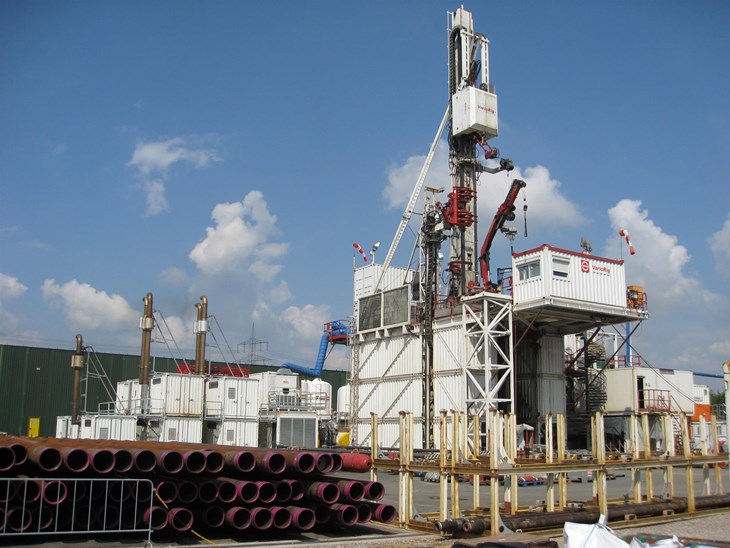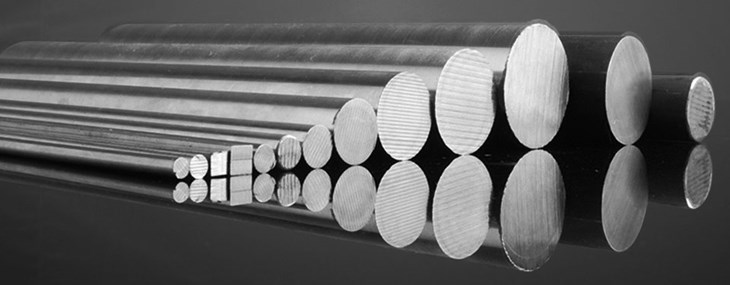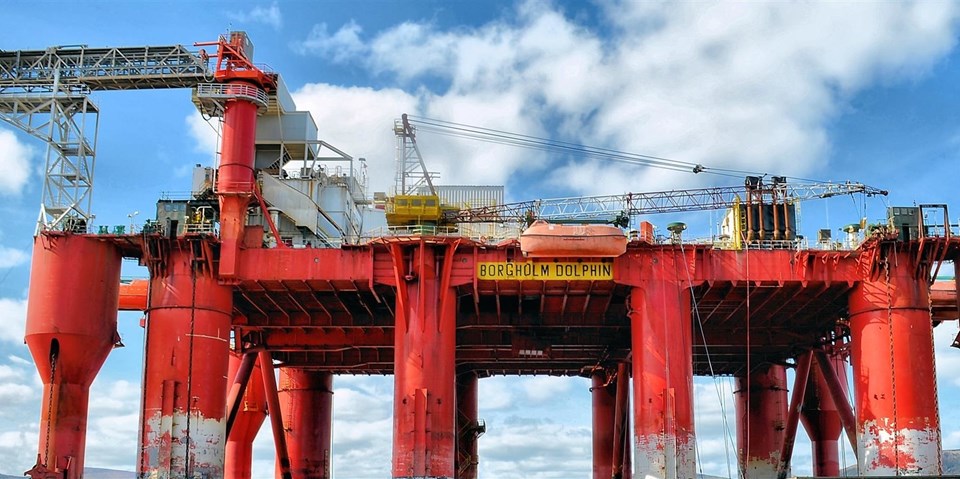Originally from Puerto Rico, Carlos Pagan was recruited out of the University of Puerto Rico at Mayagüez. “I graduated in December 2007,” says Pagan, “and was working for Fluor by January 2008.”
Things move fast in the EPC world; after working in material management for only a couple of months, Pagan moved on to a Polysilicon plant project out of Moses Lake, in Washington, DC. In 2009, during a downturn, the project lost funding and Pagan moved back into material management as part of Fluor’s U.S. Army Logistics Civil Augmentation Program, providing the U.S. Department of Defense (DoD), coalition forces and Federal inter-agency with logistical services, labour and resources including base-camp construction, housing, transportation, fuel, meals, laundry and recreation.
“There were eight of us in charge of that program, and we were basically standardizing what they were purchasing,” explains Pagan. “Everything from the valves and piping in their potable water systems to air conditioning units and even Xbox! We specified and tracked everything and then that went through purchasing software SAP.”
While tedious, the program made it possible for Pagan to stay with the company — and within the industry — when many other people were getting laid off. When things picked back up, he was able to switch back into oil and gas, working as a Piping Material Engineer on Fluor’s supporting natural gas offshore platforms out of Trinidad and Tobago. Fast-track to 2012, he took an opportunity at WorleyParsons as the Lead Specifications Material Engineer for Gulf of Mexico (GoM) projects and is currently the Program Lead Materials Engineer for four offshore assets.
Greenfield, Brownfield and Offshore
“I switched to WorleyParsons because I was more interested in offshore projects at the time,” says Pagan. “At Fluor, the opportunity was for an onshore greenfield project, which many people prefer because greenfield projects tend to last a long time and are very scheduled, very
methodical. It could be a two-billion-dollar project that takes seven years to complete. With a greenfield project, you know exactly what to do and you could be doing the same thing for three months before moving on to the next task.”
“Brownfield projects, which are upgrades or maintenance projects for existing structures, are usually small, fast and they change all the time. You might have 10 or 20 of them happening at once, which can be challenging, but I enjoy it — I think it makes the job more interesting, more dynamic.”
Offshore projects come with their own unique set of challenges that require precise attention to detail, speed and improvisation.
“Say you get a call for a replacement valve,” explains Pagan. “How do you get it to the platform? You have to schedule a boat to bring it over. If it’s small enough, we can send it via helicopter, but you still need to schedule that helicopter ride. It isn’t as simple as sending it over as soon as it’s done — there are many more moving parts and, especially with brownfield projects, you need to be moving at lightning speed.”
Getting specialty valves to the platform poses another challenge in the form of planning and delivery. Many factors must be considered when it comes to installation, not least of all the long lead times. “An engineered 24-inch valve will take between 52 and 56 weeks to deliver,” says Pagan. “These valves are typically being shipped into the United States from overseas and even if money was no object and you expedited it, 48 weeks is as fast as you can possibly get it.”
When a replacement-in-kind is necessary, Pagan says that the process is more of a forensic research project than it is reverse engineering. “We track down the valve’s data sheet and we try to get the exact same one,” he says. “If possible, we try to get it from the same manufacturer, though that might be a challenge if the valve has been ‘modernized’ since it was installed.
“When I say ‘modernized’, I mean that the manufacturer has upgraded the valve design, which is great, but it can create a challenge for us, because we need the face-to-face dimension of the valve to be exactly the same as the old one. It has to be consistent, particularly on a Brownfield project.”
Production loss, though not uniquely an offshore problem, adds another layer of difficulty. If anything “goes down”, production is shut down completely. In the event of a shut down, it’s “all hands-on deck” until the platform is up and running again. “The logistics of mobilizing people and equipment to an offshore platform for an immediate need adds another level of complexity to the offshore work,” says Pagan.

Small Deviations, Big Problems
One of the first projects that Pagan worked on at WorleyParsons was standardizing valve materials of construction and soft goods descriptions across one of its client’s GoM platforms — four platforms in total. Because they were written by different people or at different times, each platform had different descriptions, which was creating a lot of extra documentation and complications.
He explains: “Let’s say for example that a ball valve for offshore platform “A” was specified with a 17-4 stem, but for platform “B” was specified with a 316 stem. When we went to purchase a ball valve for”B”, the vendor would give us a 17-4 because the “A” platform allowed it — but that’s not what the description called for. These small deviations were causing tremendous amounts of complications and extra documentation. If the valve does not match exactly what is called for in the description, it goes through a formal deviation process. That is why the standardization was such a priority and an incredible tool for a fast response to the platforms.”
To eliminate this problem, the Piping Engineering team created one description that would meet the criteria for all four platforms. The standardization took two years to complete, but the impact was significant.
“Once deployed, it proved very effective — not only in terms of clearing up paperwork, but the client was able to transfer inventory between all of its platforms. Now, if they need something and they have the part in their inventory, they know they can use it because it has been specified to fit anywhere. In offshore Brownfield work, it’s a very quick turnover —they need parts immediately and they can’t wait.”
Equipment and Maintenance
Considering the high cost of production loss, we asked our expert if the risk of a failure was enough to influence the purchasing decisions of oil and gas clients. The answer was a resounding yes.
“Absolutely,” he says. “Some clients, for example, specify Super Duplex and higher alloys where other owner/operators may not. It’s an additional cost to them, but we have not had many — if any — issues with corrosion using Super Duplex. Ultimately, the upfront investment in high-quality materials is far lower than the cost of replacing the equipment or having it fail offshore.”
Pipe failures offshore can be particularly disruptive, because welding can only be done during a shutdown or contained within a “PWE” — a tent made of fire-retardant panels that acts as a barrier between the ignition source (welder) and an explosive/fire hazard (hydrocarbons). “Hydrocarbons are flammable, so we don’t weld offshore unless it’s during a shutdown, and even a maintenance shutdown is only around 15–30 days,” explains Pagan. “Because of this, everything on an offshore platform is meant to last 15 or 20 years without issue.”
Maintenance shutdowns, or “turnarounds”, allow oil and gas companies or EPCs to perform preventative maintenance, renovations or upgrades during periods when production is at its lowest and skilled labour is readily available. As it turned out, Pagan’s client had a turnaround scheduled for the week following our interview.
“So, all the projects we’ve been working on — yesterday, a month ago, 6 months ago — will be ramping down for the shutdown,” says Pagan. “We’re all focusing on doing the most work we can in the time we have.”
Turnarounds also require extensive planning and the careful coordination of labor and materials, leaving no room for carelessness or mistakes. “We can’t go out there and say ‘oops, we’re missing a valve, we have to go back’,” he says. “This is an unacceptable situation that just cannot happen.”
Ball valves are the most common block valves on platforms, but they also use swing check valves, wafer check valves and butterfly valves. “We throttle with butterfly valves and use them in our sea water or fire water services,” says Pagan.
“Triple-offset valves are much cheaper than they were 15 years ago, so we use them as our primary manual throttling valve. We rarely use gate valves, except our crucial boarding valves. We have integral double block and bleed valves because they are space savers and any chance we get, we go lighter and smaller.”

Materials
In terms of material selection, our expert points out a couple of differences between upstream and downstream projects:
“With downstream projects, you are usually working with higher temperatures, in a very different environment than offshore. The materials of construction vary immensely. Low chrome-based materials are great for onshore high temperature work; however, for offshore we use high chrome materials like 22% chrome and 25% chrome to combat the harsh environment.
“Upstream projects, including offshore, are usually lower temperatures with a much more corrosive environment, so we use a lot of copper-nickel, Monel or Super Duplex when the service requires it. The bulk of our materials are carbon steel and 316 SS, both of which are always coated.”
Material availability is rarely an issue, except when it comes to some fiberglass fittings. “Our fiberglass contractor recently had to go to Singapore to procure reducing pipe fittings, which we use for seawater applications. We specify a coating for them that provides UV protection because fiberglass can get flaky when exposed to UV light,” he says.
Super Duplex, though still a little tricky to get, has become much more common as the price has dropped, and is typically used in seawater and fire water services.
Nobody likes Paperwork — but Traceability is Key
Not everyone is cut out to be a Piping Materials Engineer. As with any job, there are elements that Pagan likes more than others.
“What I like most about this role is that it gives me the opportunity to learn new things all the time. I don’t want to just specify the pipe, I want to know what it is made out of, what it must be made out of and why. I want to understand as much as I can about welding, materials, NACE vs non-NACE, everything. I feel that I am fortunate to have been exposed to so much during my time at WorleyParsons. As other engineers were moved to other projects, I was able to absorb their tasks and broaden my own knowledge — I have really enjoyed that.”
“There are other aspects of the job that are less thrilling,” he laughs. “Like paperwork — nobody actually likes paperwork! Poring over every material test report (MTR) can be a little tedious but it is a necessary evil. Traceability is hugely important, especially for my current client; I have never worked for a client so adamant about having MTRs for everything. Right down to the nuts on the bolts.”



